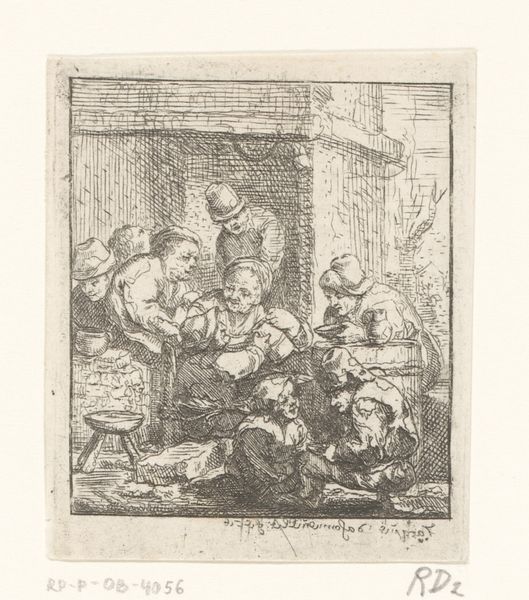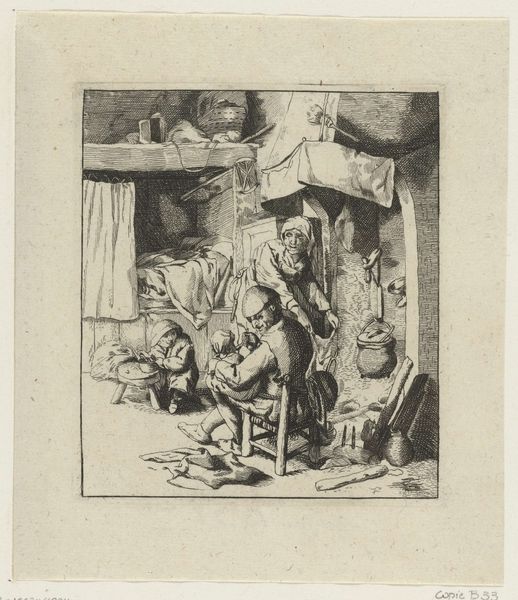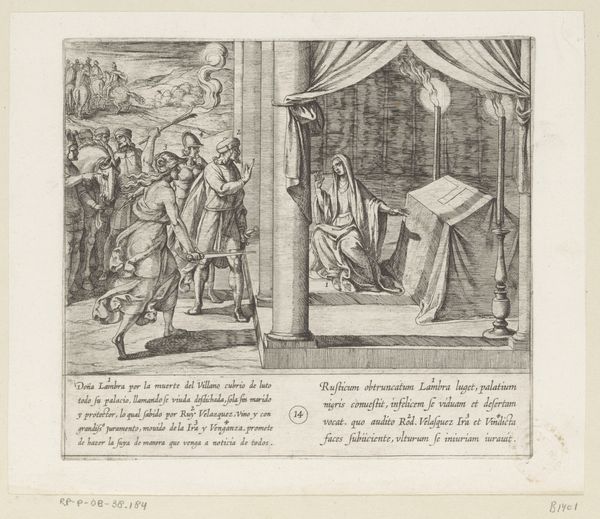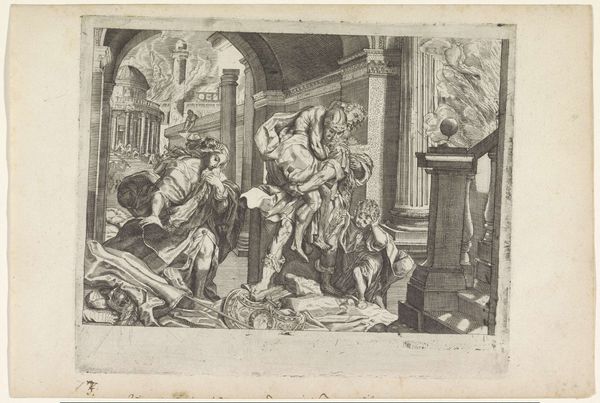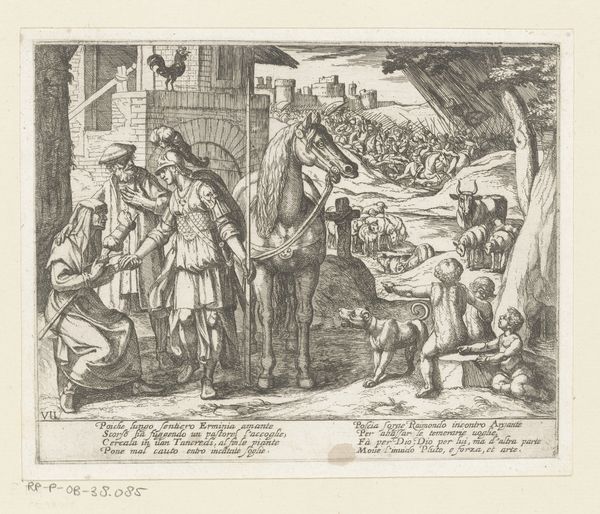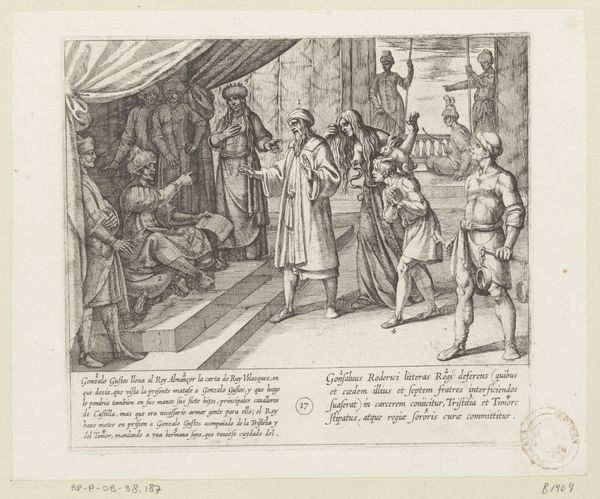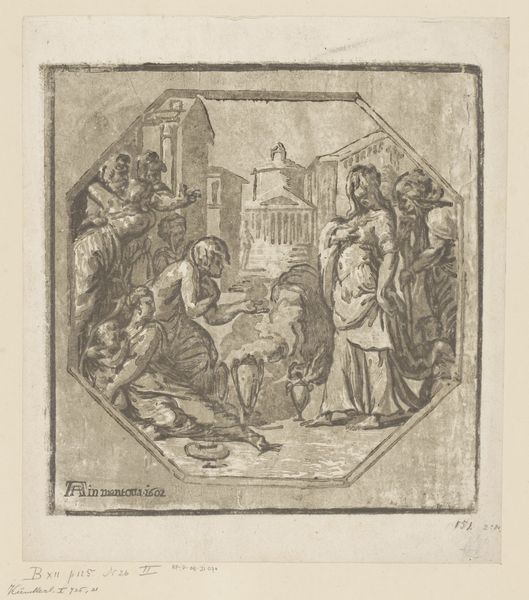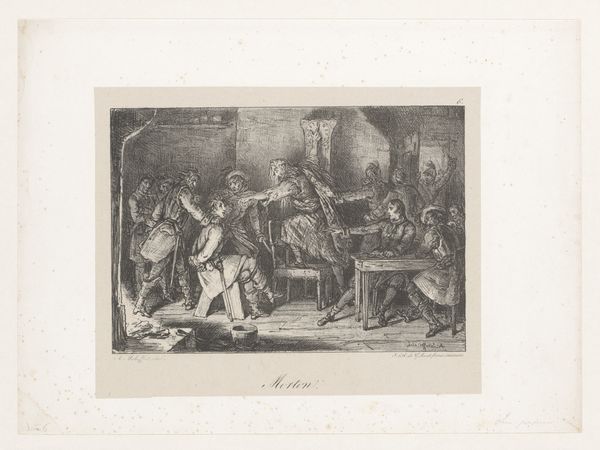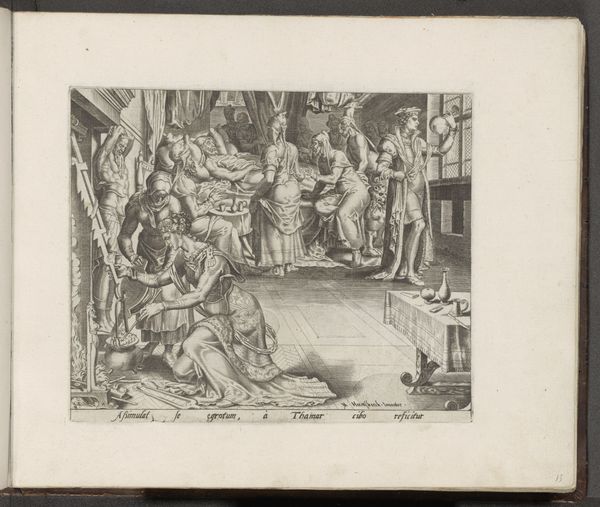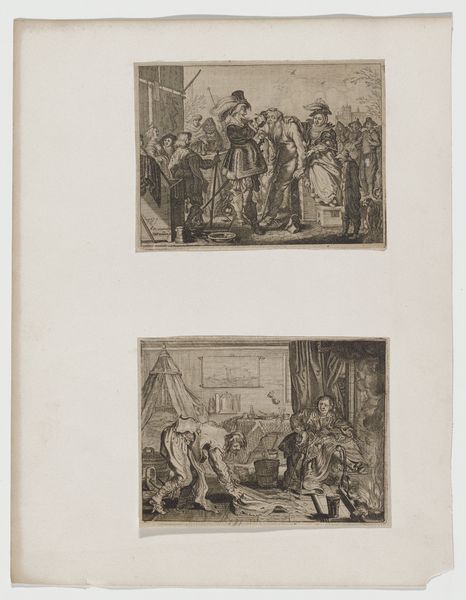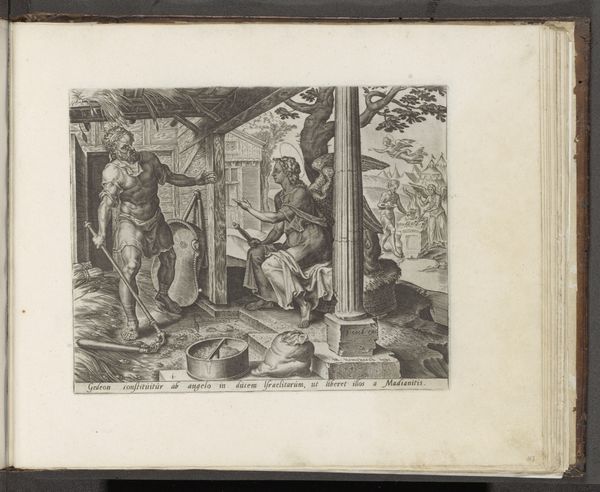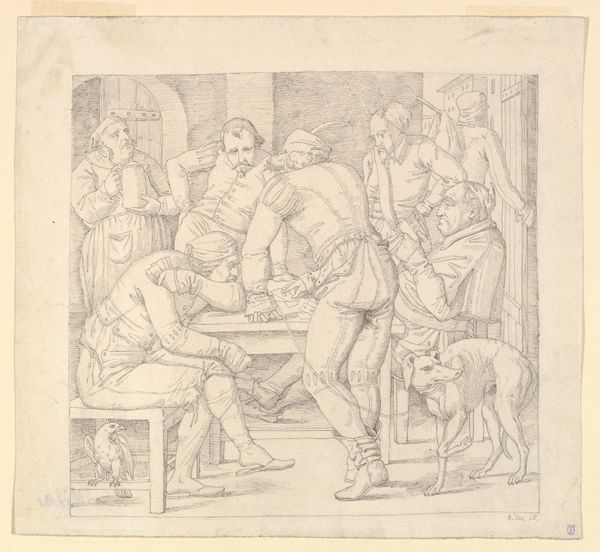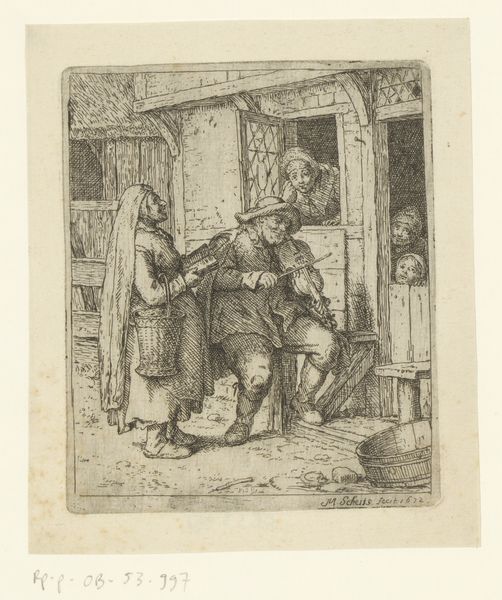
print, intaglio, engraving
#
medieval
#
narrative-art
# print
#
intaglio
#
mannerism
#
figuration
#
line
#
history-painting
#
engraving
Dimensions: height 218 mm, width 315 mm
Copyright: Rijks Museum: Open Domain
Curator: Let’s turn our attention to "De slapende koning wordt door de Spaanse koninkrijken aangevallen," or, "The sleeping king is attacked by the Spanish kingdoms," an engraving crafted around 1575. Its artist is anonymous. The piece is currently held at the Rijksmuseum. What strikes you about it? Editor: My immediate response is of calculated chaos. Despite the obvious violence of the scene, the piece feels restrained, as though each figure and architectural element were carefully placed for maximum, albeit unsettling, harmony. It is a study of balanced tensions. Curator: Indeed. Consider how the composition is bisected: one half focused on the slumbering king and his immediate turmoil, the other, the regimented procession of the Spanish kingdoms. The print employs a rigorous linearity, emphasizing the deliberate construction of space. Editor: And what powerful symbolism those Spanish figures bear. The regal, almost theatrical garb denotes wealth and might, but their presence seems almost dreamlike, which plays well to the vulnerability and possible propaganda of attacking a king in slumber. This image speaks to larger concepts of power, betrayal, and national identity in the sixteenth century. The symbolic language is palpable. Curator: Precisely, the linear precision, while aiding visual clarity, does, paradoxically, foster this ethereal quality, typical of Mannerism. It avoids stark contrasts, flattening the perspectival recession of space while keeping the detail work immaculate. What are your thoughts about this technical aspect, particularly given the sociopolitical context of its production? Editor: The symbolic clash seems too easy—like simple political propaganda meant to sway an unsophisticated viewer. Perhaps it reflects an attempt to vilify a weakened adversary, capitalizing on anxieties regarding national sovereignty. In that context, the choice to depict it with such dreamlike visual tropes makes the political point more memorable and less severe. Curator: I agree, seeing the piece primarily in its design facilitates a wider understanding of both the aesthetic principles that went into making it as well as how such deliberate choices helped translate messages that endure even today. Editor: True, uncovering and deciphering those layers is what gives artworks like these an extended life.
Comments
No comments
Be the first to comment and join the conversation on the ultimate creative platform.
